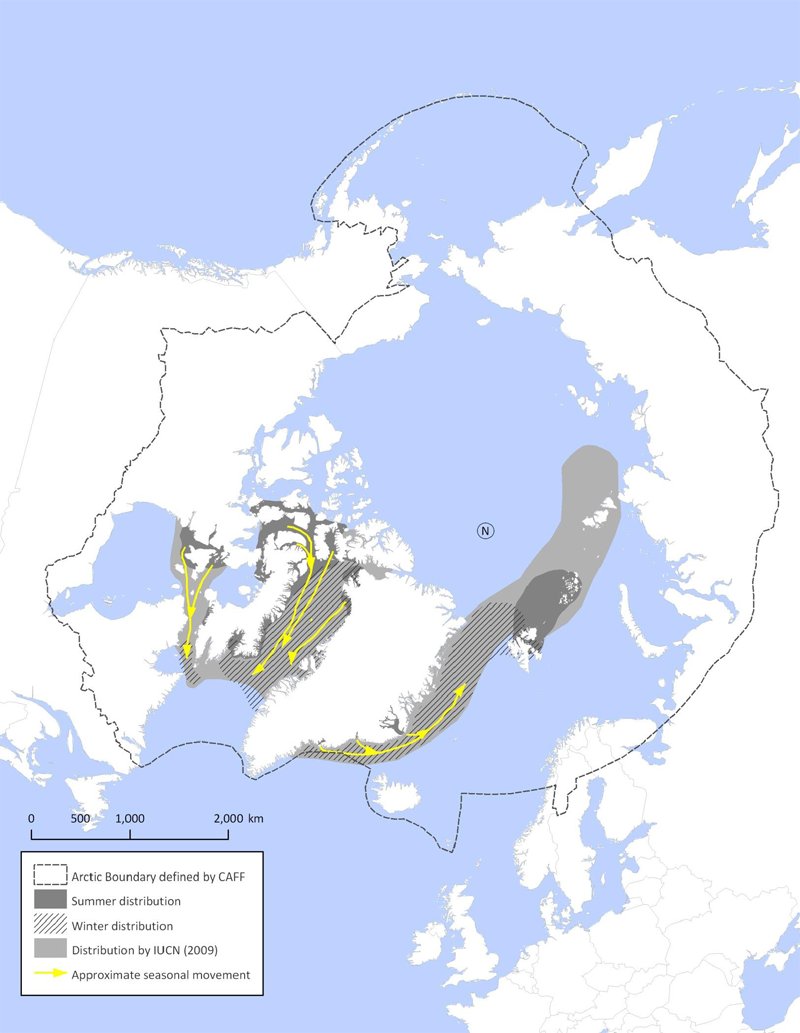Habitat
Narwhals spend their entire lifetime in the Arctic Ocean. The
only other two whale species that live their whole life in the
arctic are the beluga whale and the Bowhead whale (Laidre 2004).
Like many other whales, narwhals live in different areas
depending on the season. In summer, groups of narwhals can be
found in the Arctic Ocean and Hudson Bay in Canada, around
Greenland, and around Arctic islands to the East such as
Svalbard and several Russian islands (Heide-Jorgensen et al.
2003). In winter, the narwhal range encompasses Baffin Bay and
Hudson Strait on the west side of Greenland and the Eastern
shore of Greenland extending to Svalbard island (Heide-Jorgensen
et al. 2003). Groups of narwhals will spend the winter in one
general area, and only change location in order to keep in
contact with cracks in the sea ice, from which they can breathe
(Heide-Jorgensen et al. 2003). Narwhals are
very consistent in the areas where they spend summer and winter.
Groups of narwhals will return to the same locations year after
year, and rarely deviate (Palsboll et al. 1997).
Narwhals also have distinct migration routes between
their winter and summer areas that are used every year (Palsboll
et al. 1997).
The lack of flexibility or deviation in the winter and summer areas,
as well as the strictness and consistency of the migration routes
that narwhals use is a concern for researchers as time progresses
(Laidre 2005; Williams et al. 2011). Researchers and scientists are
unsure if and how narwhals will adapt to the changing climate
conditions that are predicted for the future. If the animals that
narwhals depend on for food change location, or the water conditions
become detrimental, the narwhals could be at risk because they are
so consistent and may not be able to adapt (Laidre 2004).
The depths that narwhals are found in the ocean also change
throughout the year. In summer, narwhals maintain a relatively
shallow depth of and do not spend much time or effort foraging for
food (Heide-Jorgensen et al. 2003; Laidre 2004). While the narwhals
are migrating during fall and spring, they do not vary their depth
much, and use most of their time and energy swimming to the seasonal
areas (Heide-Jorgensen et al. 2003). At the winter grounds, narwhals
will dive deep and often, hunting for fish and squid (Laidre 2004).
